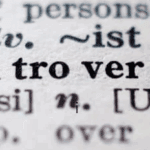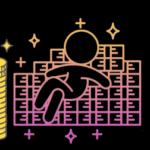
The Origins of the Names “Sun” and “Moon” in English and Other Languages

The celestial bodies that dominate our sky, the Sun and the Moon, have been central to human existence for millennia. Their names, used daily across cultures, carry deep linguistic and mythological histories. This blog post delves into the etymology of the words “Sun” and “Moon” in English and explores how these names are expressed in other languages, such as Hindi, and the stories behind them.
The Name “Sun”
English: “Sun”
The English word “Sun” has its roots in Old English, where it was known as “sunne.” This term can be traced further back to the Proto-Germanic word “sunnōn,” which is also related to the Old High German word “sunna.” These terms are thought to have originated from the Proto-Indo-European root *“sóh₂wl̥,” meaning “sun” or “to shine.”
The etymology of “Sun” reflects the ancient human understanding of this celestial body as a source of light and life. In many cultures, the Sun was worshipped as a god or goddess, a symbol of power, fertility, and growth. For example, in Norse mythology, the Sun was personified as the goddess Sól, who rode across the sky in a chariot pulled by horses.
Hindi: “Surya”
In Hindi, the Sun is known as “Surya” (सूर्य). This name is derived from the ancient Sanskrit word “Sūrya” (सूर्य), which also means “sun.” In Hindu mythology, Surya is a major deity, often depicted riding a chariot driven by seven horses, symbolizing the seven colors of the rainbow or the seven days of the week.
The reverence for Surya is evident in various Hindu rituals and practices, such as the Surya Namaskar (Sun Salutation) in yoga, which is a series of postures performed in honor of the Sun.
Latin: “Sol”
The Latin word for Sun is “Sol.” This term has influenced many Romance languages, where the word for Sun remains close to this original form, such as “Sol” in Spanish and “Soleil” in French. In Roman mythology, Sol was personified as a god who drove a chariot across the sky, similar to the Norse and Hindu traditions.
The Name “Moon”
English: “Moon”
The English word “Moon” comes from the Old English word “mōna.” This, in turn, is derived from the Proto-Germanic “mēnô,” which is related to the Old High German word “māno.” These terms trace back to the Proto-Indo-European root *“mḗh₁n̥s,” which means “moon” or “month.” The connection between the Moon and the concept of a month is evident in many languages, as the Moon’s phases were historically used to measure time.
In various mythologies, the Moon has been associated with different deities, often embodying feminine qualities. In Roman mythology, for instance, Luna was the goddess of the Moon, while in Greek mythology, Selene was her equivalent.
Hindi: “Chandra”
In Hindi, the Moon is called “Chandra” (चन्द्र). This name comes from the Sanskrit word “Chandra” (चन्द्र), which means “moon” and is associated with brightness and radiance. In Hindu mythology, Chandra is a lunar deity, often depicted as a handsome young man carrying a club and a lotus, riding a chariot across the night sky.
Chandra plays a significant role in Hindu astrology, where the Moon governs the mind and emotions. The phases of the Moon, particularly the full moon (Purnima) and the new moon (Amavasya), hold special significance in Hindu culture, influencing festivals, rituals, and even personal decisions.
Latin: “Luna”
The Latin word for Moon is “Luna,” which has influenced many modern languages. For example, the Spanish word for Moon is “Luna,” and in Italian, it is also “Luna.” The term “lunar” is derived from this root, describing anything related to the Moon. In Roman mythology, Luna was the goddess of the Moon, often depicted driving a chariot drawn by horses or oxen.
Other Languages and Cultures
Chinese: “Tàiyáng” (Sun) and “Yuèliàng” (Moon)
In Mandarin Chinese, the Sun is called “Tàiyáng” (太阳), which literally means “great yang,” referring to the positive, bright, and active principle in Chinese philosophy. The Moon is known as “Yuèliàng” (月亮), where “Yuè” means “moon” and “Liàng” means “bright.” The Moon holds special significance in Chinese culture, celebrated during the Mid-Autumn Festival, where people gather to admire the full moon and eat mooncakes.
Japanese: “Taiyō” (Sun) and “Tsuki” (Moon)
In Japanese, the Sun is called “Taiyō” (太陽), a term borrowed from the Chinese “Tàiyáng.” The Moon is referred to as “Tsuki” (月), a word deeply embedded in Japanese culture, symbolizing beauty, mystery, and the passage of time. The Moon is celebrated during the Tsukimi festival, where people appreciate the beauty of the full moon.
Arabic: “Shams” (Sun) and “Qamar” (Moon)
In Arabic, the Sun is known as “Shams” (شمس), a word that has been used for millennia. The Moon is called “Qamar” (قمر), and like in many other cultures, the lunar calendar plays a crucial role in Islamic traditions, guiding the observance of months and religious events like Ramadan.
Conclusion
The names for the Sun and Moon in various languages reflect a rich tapestry of cultural, religious, and linguistic influences. From the Proto-Indo-European roots that gave rise to “Sun” and “Moon” in English to the Sanskrit origins of “Surya” and “Chandra” in Hindi, these names carry with them the stories of civilizations and their relationship with the cosmos.
Whether through the worship of deities, the marking of time, or the celebration of celestial events, the Sun and Moon continue to be more than just astronomical bodies—they are symbols of life, light, and the passage of time, deeply woven into the fabric of human history.
This post not only highlights the fascinating linguistic journey of these celestial names but also underscores their enduring significance in human culture. Feel free to check out more of such explorations at amanblogs.com, where I delve into topics that intertwine travel, culture, and history.
Hello, I am Aman (: Full Time Traveler :) At the age of 41, in April 2023, fueled by my love for travel and the determination not to remain fixed like a tree, I embarked on a bold journey. Having dedicated 17 years to a corporate job, I chose to transition from a full-time employee to a full-time traveler, driven by the desire to break free from the routine and constraints of a conventional life. Along the way, I not only explored the wonders of travel but also uncovered the transformative power of financial freedom. I realized how it could liberate me to lead a life teeming with adventure, purpose, and fulfillment. Through my blogs, I am passionately sharing my story, aiming to inspire and provide valuable guidance to those, like me, who aspire to weave travel into a life overflowing with limitless possibilities.






















Post Comment
You must be logged in to post a comment.